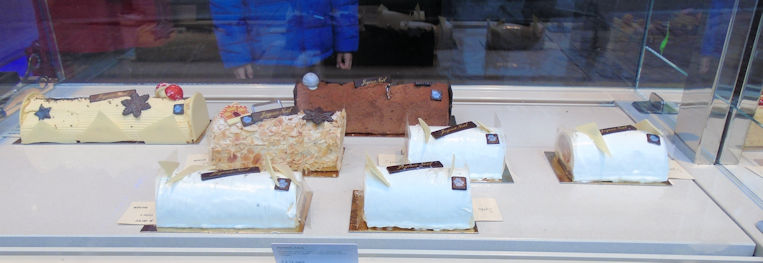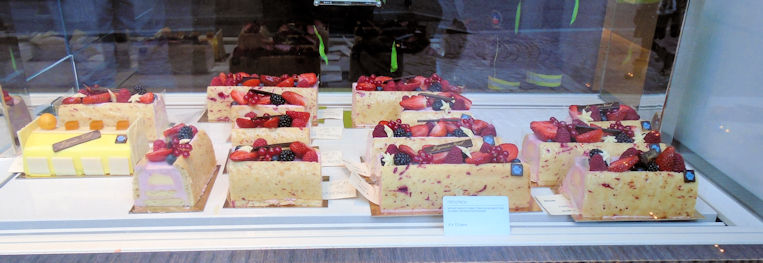

The Daily Diary of a Wandering Restaurateur
Christmas Eve
It's a short day in the 'hood. In France, the big celebration is on Christmas Eve rather than Christmas Day so the
market closes early along with most [all?] of the shops. The market opens again tomorrow afternoon but I don't know what
to expect from the various shops and restaurants. So today has been about stocking up on food for a couple of days just in
case. If the buildings stay lit after the market closes, Margene promises she'll take the magic stroll after it gets dark.
But it's Christmas Eve, and that's when it all happens in France. Needless to say, I'm no expert on local Christmas
traditions, so I am once again borrowing from the Lingo Lunch blog which seemed to have it dialed in.
Trust the French to have a million different types of Christmas dishes. But what constitutes a typical Christmas dinner?
After midnight mass on Christmas Eve, the French gather to eat a feast called le Réveillon which basically
translates to Christmas Eve in English. And boy, is it a feast! It consists of oysters, snails, seafood, smoked salmon,
caviar ... basically the works! Following that, they bring out the bird. Most popularly the French eat a goose for their
Christmas dinner, which happens at around 1am – not very good for the waistline, perhaps, but who's to argue with
tradition?
Beside this typical Christmas Eve two-course meal, the French are able to offer us many many more hours of eating in the
form of a third course. A third course multiplied by three. They have thirteen desserts that are classical for the
Christmas party. They are as follows and, I understand, are eaten in order (though the choices may vary):


There won't be much in the way of photos today ... at least nothing you (and I) haven't seen of Colmar already. But since Bûche de Noël may be new to you, here's an example of what some of them look like sitting in the window of a patisserie a few doors down from the apartment. As you can see, Bûche de Noël comes in dozens of different styles, some looking far more log-like than others. I was tempted to pick one up, but even a small one would have been too much for the two of us. Next time we'll have to come back with a few friends. Wanna come?
© 2016 Restaurant Doctor